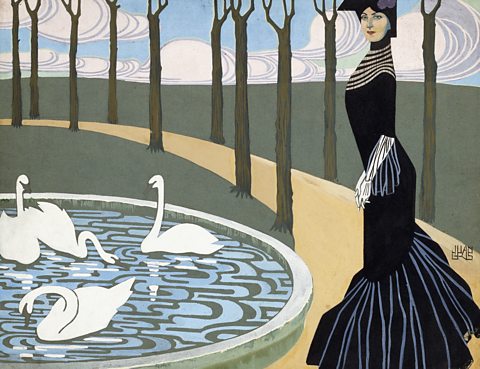Leading lines
Lines that our eyes follow round a composition are called leading lines. They are a useful tool to create a visual flow or to emphasise focal points.

The Polar Sea by Caspar David Friedrich shows how diagonal lines can lead a viewer into an image. The shallow diagonal along the light brown sheets of ice at the bottom leads the viewer from left to right. Here the large yellow triangle of ice leads the eye towards the main pyramid shape in the middle of the composition.
This is a great example of how the placement of lines can help lead the viewer through the composition.

In Leda by Juan Gris, curving lines lead our eyes in both directions along the path. They take us from the bottom right of frame and converge in the top left, creating a sense of depth.
The path and the curve of the pond lead us to the bottom of the woman’s dress. Here the lines of her skirt draw our eyes up the outline of her figure to her face. The vertical lines of the trees around her also help lead our eyes up to the top of the frame.